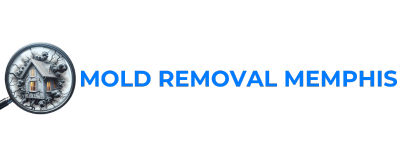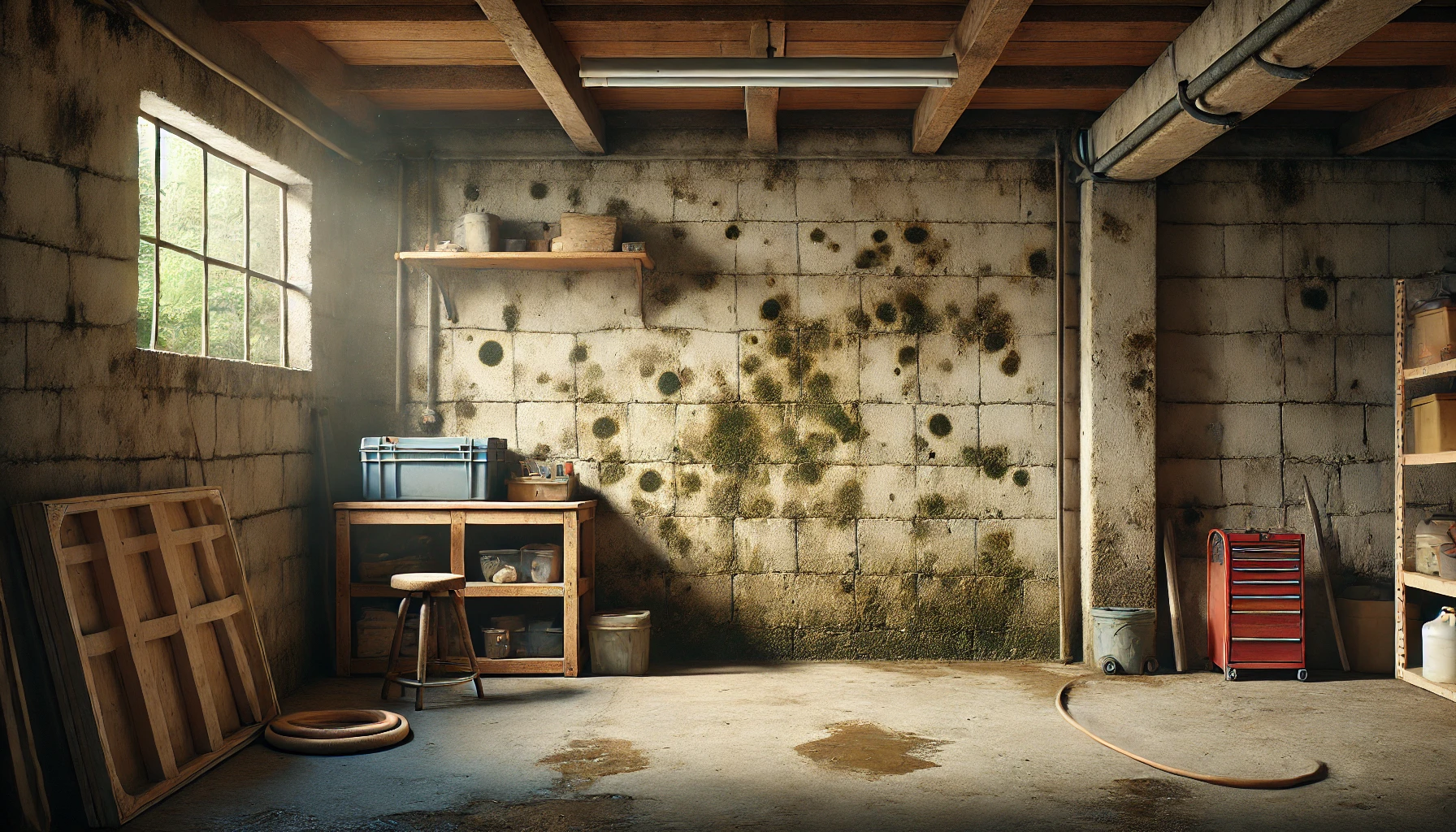Mold In Garage: Causes, Removal And Prevention Tips
TL;DR: Mold in garages often results from high humidity, poor ventilation, and moisture intrusion. Address water leaks and dampness sources first. Improve ventilation with vent fans or open doors when possible. Use a dehumidifier to maintain humidity below 60%. Clean visible mold with a bleach-water solution or products like Concrobium. For severe cases, remove affected drywall and inspect behind it. Unfinished drywall is more susceptible to mold due to its moisture-retaining surface. When replacing, consider using moisture-resistant materials like greenboard or OSB (Oriented Strand Board). Seal concrete floors and walls with products like UGL Drylok. Apply mold-inhibiting primer and paint after cleaning. Insulate walls and improve drainage around the garage. Store items off the floor for better air circulation. Regularly inspect for mold, especially on organic materials. In vehicles, check for water accumulation in trunks and under seats. For subterrain garages, consider moisture barriers and floor resealing. Ensure proper attic ventilation and vapor barriers during construction to prevent future mold issues.
Many homeowners struggle with mold growth in their garage corners and floors. This issue can arise due to various factors, such as high humidity, poor ventilation, or water leaks. For instance, mold often appears in new garages with inadequate insulation or unfinished drywall. Moisture problems may also result from leaky doors or stagnant air. The real challenge goes beyond just removing visible mold—it’s also about identifying and resolving the underlying moisture issues. Failing to address these problems can lead to costly repairs in the future.
If you’re facing mold in your attached or detached garage, there’s no need to panic. This guide provides practical tips and preventive measures to help you tackle the issue effectively.
Why Is There Mold On Garage Drywall?
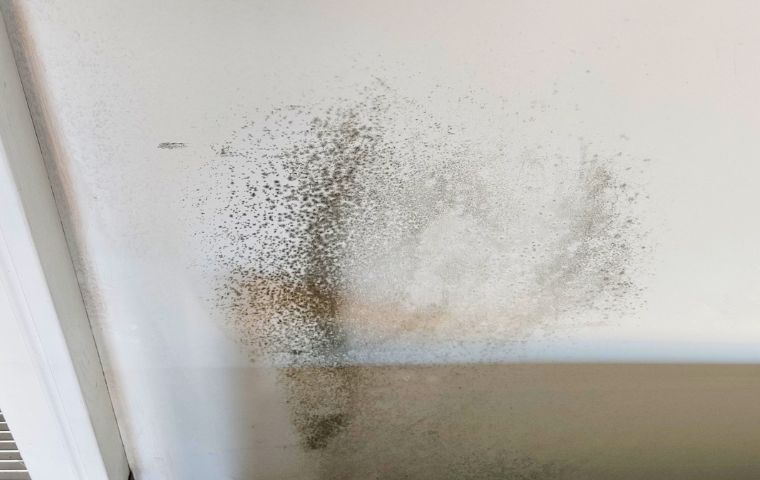
The causes of mold on garage drywall are:
- Excess moisture
- Unfinished drywall
- Condensation on cold drywall
- Water leaks through unsealed garage doors
- Dampness from concrete floors
- Lack of insulation or vapor barriers
- Contact with cement
- Poor ventilation
- Blocked airbricks
- Issues with damp proof course (DPC)
- Wet spots in the garage
- Damp proof paint trapping moisture
Mold on garage drywall mainly happens because of too much moisture. Unfinished drywall is especially prone to mold growth because of how it’s made. Moisture can come from different places, like condensation on cold drywall, water leaking in through unsealed garage doors, or dampness from concrete floors. Sometimes, not having the right insulation or vapor barriers behind the drywall can make moisture build up. When drywall touches cement, it can soak up moisture, which can lead to mold.
If the garage is sealed tightly without good ventilation, moisture can get trapped, especially when snow melts off cars. To keep mold at bay, it’s a good idea to use mold-resistant drywall, like green or purple board, especially in areas that tend to be damp. Proper installation is key. This means avoiding direct contact with concrete and making sure the drywall is primed, which can help lower the risk of mold.
It’s also important to check for any blocked airbricks, issues with the damp proof course (DPC), or wet spots in the garage that might add to moisture problems. One thing to watch out for is damp proof paint, which can trap moisture inside the walls and possibly make things worse.
Is Mold In Garage Dangerous?
Mold in your garage can be a serious problem. It not only poses health risks but can also damage the structure of your home. Mold is a type of fungus that grows in damp places. Its spores are everywhere, both inside and outside.
When these spores land on wet surfaces, they can start to grow and multiply. This can lead to health issues like allergies, breathing problems, and skin irritations. The U.S. Environmental Protection Agency (EPA) points out that moisture is the main factor that helps mold grow indoors. Mold needs moisture and organic materials to thrive, such as wood, paper, and other common items found in garages.
Being exposed to mold can cause symptoms like a stuffy nose, sneezing, skin rashes, headaches, and trouble breathing. This is especially true for people with asthma or weakened immune systems. The Florida Department of Health notes that mold can lead to allergic reactions, irritation, infections, and even toxic effects. Some types of mold, like Stachybotrys chartarum, produce mycotoxins that can increase health risks. This makes it important to deal with mold issues quickly.
Research shows that when mold is present in a home, it often involves a mix of factors. These can include bacteria, yeasts, viruses, high humidity, dust mites, and damaged building materials. Knowing how these factors affect indoor air quality is key to preventing mold and related health problems. A study in Environmental Science and Technology Letters looked at how mold from water damage in a basement can spread and contaminate other parts of a house. The study found that mold spores can travel throughout a home, even if the affected area is sealed off. This means mold can harm indoor air quality beyond where it started.
In this study, researchers collected settled dust samples from different floors of a home that had experienced water damage. They discovered that mold growth in one area can reduce the variety of fungal species in the entire environment. The results show that even if you can see mold in one spot, it can still affect air quality and health in other areas of your home.
What Causes Mold To Grow In Detached Garage?
Mold grows in detached garages mostly because of too much moisture and not enough air flow. These garages often have high humidity, sometimes over 70%, which can cause problems. Moisture can come from leaks, condensation on cold surfaces, or wet vehicles and items stored inside.
Garages without proper ventilation—like missing soffit vents, ridge vents, or exhaust fans—are more likely to have mold.
If there’s no damp proof membrane (DPM) under the concrete floor, moisture from the ground can rise up. Surfaces that are unfinished, like bare drywall or OSB, can soak up moisture easily.
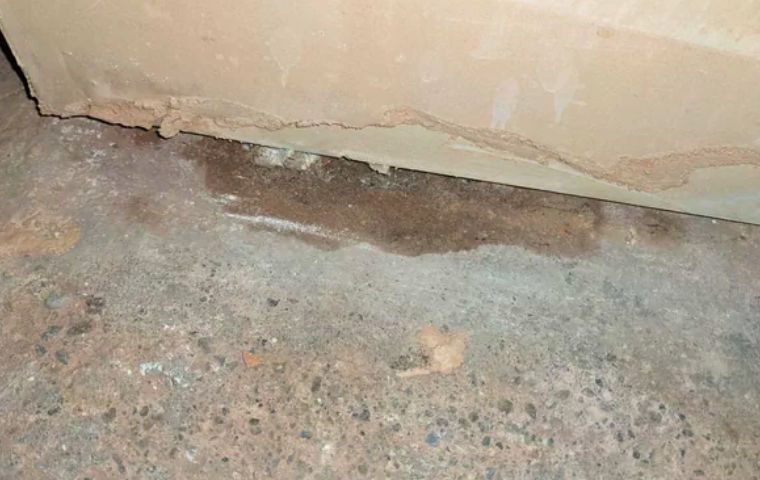
Temperature changes, especially in places like Portland, Oregon (climate zone 4C), can cause condensation when warm, moist air meets cold surfaces. Some garages use unvented natural gas heaters, which can add moisture to the air. Good insulation is important. For example, having R-19 insulation in the walls and R-30 in the ceiling might not stop condensation in a heated garage that stays at 55°F while it’s around 30°F outside.
High humidity, poor air flow, and temperature changes create a good place for mold to grow. Newly built homes can have a lot of moisture as they dry out, which can lead to mold in the garage. Skylights can make things worse by adding heat, even though they let in sunlight.
Cold wood surfaces in uninsulated garages can lead to condensation. Mold likes warm, moist places with food sources like wood. Even in low humidity, mold can survive if moisture gets trapped or if there were past water problems. Changes in the seasons, especially in humid areas like Georgia, can make mold issues worse.
Some garages have doors with gaps that let moisture in. Items like fabric strollers can easily get moldy when stored in humid conditions.
Why Does Mold Grow In Garage Ceiling?
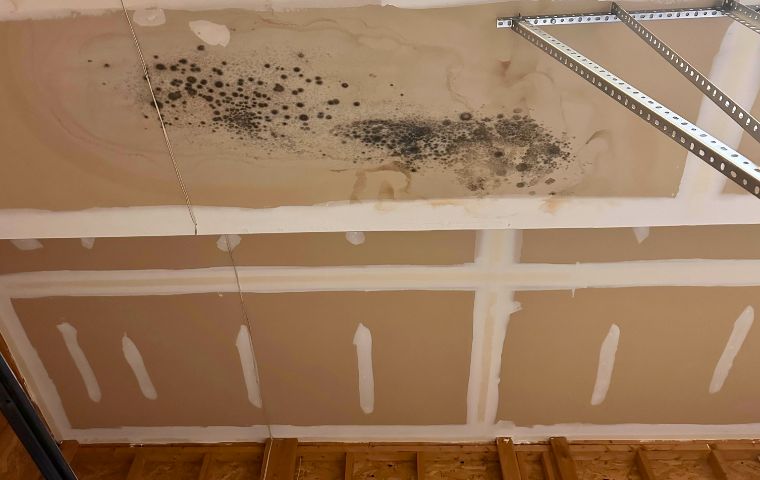
Mold on garage ceilings is seen as dark spots or patches, which can range from small areas to larger ones. Sometimes, the affected area might be about the size of a DVD case. Mold usually appears between ceiling joists or along edges where moisture tends to gather.
Several factors can cause mold to grow in garage ceilings. One reason could be water leaking from a balcony or roof right above the garage. In winter, ice and snow can build up on these structures, leading to water seeping in.
Another possible cause is plumbing issues, especially if there’s a bathroom above the garage. Leaky pipes, particularly those connected to toilets or showers, can let moisture into the ceiling space.
Some homeowners notice that mold comes back even after they’ve cleaned it. This suggests there’s still a moisture problem. Interestingly, the drywall might not feel damp or show signs of bubbling, making it hard to pinpoint the source of the issue.
When checking for mold, it’s important to look closely at the ceiling. Sometimes, pressing firmly on the affected area can cause the drywall to break apart, showing how much damage there is. If you cut into the ceiling, you might find insulation behind the drywall. Keep in mind that while mold can’t eat fiberglass insulation, dust in the insulation can provide a food source for mold.
If you think there’s a plumbing leak, check for pipes above the moldy spot. Drain pipes from showers or sinks are often to blame. However, the walls around the area may look dry and mold-free, even if there’s a leak.
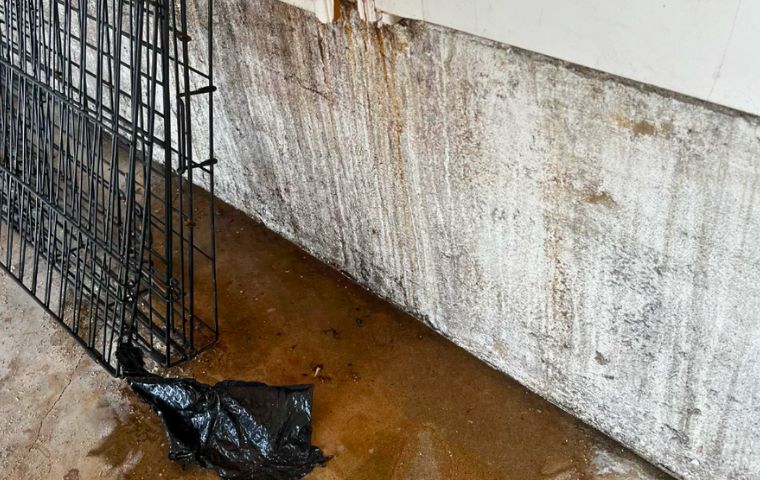
To fix mold problems, experts often recommend cutting out the affected drywall, extending the removal area about 12 inches beyond what you can see. This helps inspect and treat the underlying structure thoroughly. Any wet insulation should also be removed since it can hold moisture and encourage mold growth.
To prevent mold from coming back, you need to tackle the root cause of moisture. For uninsulated garage roofs, applying an oil-based paint or varnish to the underside of plywood roofing can help stop mold from feeding on the wood.
Sometimes, the mold issue might be linked to poor-quality materials used in construction. For example, some homeowners have had problems with cheap plywood used for roof decking, which can be more prone to mold growth. While this type of plywood may still work as roof decking, it often has a shorter lifespan and is more likely to develop mold issues.
How To Get Rid Of Mold In Garage?
Here’s how you can clean and remove mold in garage:
Step 1: Identify Moisture Sources
Mold thrives in damp environments, so the first step is to locate and address moisture sources in your garage. This could be seepage from concrete floors, wall leaks, or condensation. Check for leaks in the roof, walls, or windows.
Look for blocked gutters or drainage problems. Ensure the ground slopes away from the garage foundation. Poor insulation can cause condensation, while inadequate ventilation leads to high humidity.
In new homes, issues like insufficient priming, over-sealing, or missing vapor barriers can cause problems within the first year. For older homes, poor ventilation, insulation issues, or deteriorated weatherproofing may be culprits. Inspect the walls, ceiling, and floors for visible mold patches. Pay extra attention to spots behind cabinets or stored items, as these can trap moisture and block airflow.
Step 2: Clean Existing Mold
Once you’ve identified moisture sources, clean existing mold thoroughly. Wear proper personal protective equipment (PPE) including an N95 mask, gloves, and eye protection.
Choose a cleaning solution such as white vinegar with at least 6% acidity, hydrogen peroxide (6%), or specialized products like Concrobium or Mold Armor to spray on mold in garage. You can also make a DIY cleaner by mixing 1 quart of hot water with 1 tablespoon of baking soda, 2 tablespoons of washing soda, and 2 tablespoons of Trisodium Phosphate (TSP).
Apply the solution, let it soak, then scrub and wipe clean. Repeat until no new mold growth appears. For larger areas, use a HEPA vacuum to remove loose spores before applying the cleaning solution. Some experts suggest avoiding bleach since it might not kill all the mold spores and roots. Instead, they recommend using 6% peroxide or Sporicidin for better long-term results.
Step 3: Dry The Area Completely
After cleaning, it’s crucial to dry the affected areas thoroughly. Use fans to circulate air and speed up drying. Run dehumidifiers to reduce moisture levels. Aim to keep humidity below 60% to prevent mold regrowth.
Continue drying efforts for at least five days to ensure all moisture is eliminated. Use a dehumidifier to keep moisture levels down. If you still have dampness, you might need to install a moisture barrier under the concrete floor or use sealants like UGL Drylok on walls and floors. In colder climates, insulating the garage footing with rigid foam can help prevent moisture from coming up from the foundation.
Step 4: Improve Ventilation
Proper ventilation is key to preventing future mold growth. Install vents, exhaust fans, or a low-voltage fan system. Consider adding an extractor fan high in the garage to capture warm, damp air. For garages without ventilation, install a quality exhaust fan for air exchange. Ensure the fan pulls in fresh air to avoid negative pressure in the garage.
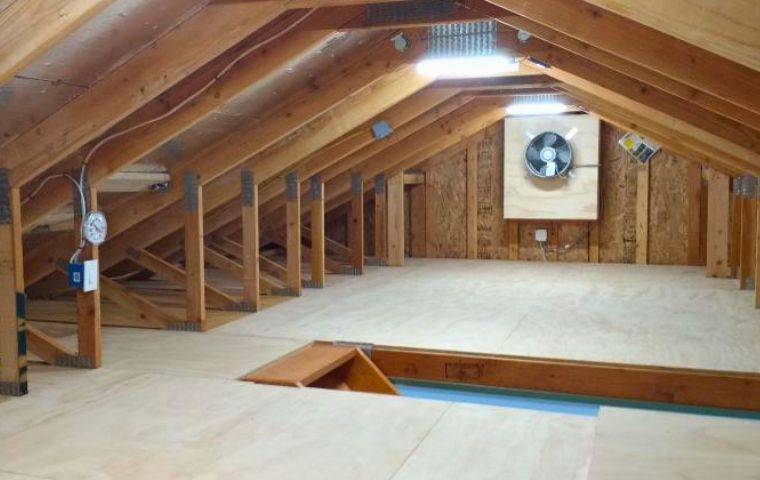
In some cases, a bathroom fan can be used for continuous garage ventilation. Sometimes, just partially opening the garage doors during windy conditions can help improve airflow. If you have a condenser tumble dryer in the garage, make sure it’s vented to the outside to keep moisture down.
Step 5: Address Structural Issues
For severe mold problems or if mold has penetrated materials, you may need to remove and replace affected drywall, extending at least 6 inches beyond visible mold. Use a HEPA vacuum when removing moldy materials to prevent spore spread.
Clean exposed framing and studs thoroughly. Consider using mold-resistant materials like green board or purple board when replacing drywall. Ensure new drywall doesn’t touch concrete floors to prevent moisture wicking.
For attached garages, use 5/8 inch fire-resistant drywall for added safety. We have had success using oriented strand board (OSB) instead of drywall for our clients, as long as it’s primed for moisture resistance. While you’re renovating, take the chance to improve insulation and fix any structural problems that could be causing moisture issues.
Step 6: Apply Mold-Resistant Primers And Paints
After addressing structural issues, apply a mold-killing primer like Kilz to seal the area. Follow with antimicrobial paint for extra protection. Consider adding a mildewcide to your paint for additional mold resistance. While Kilz 2 is commonly recommended, some experts say it may not stick well. Instead, consider using Sherwin Williams PrepRite ProBlock Primer/Sealer or a similar high-quality product. Apply a mold-resistant primer first, then follow up with an exterior mold-resistant paint.
Step 7: Implement Long-Term Prevention Measures
To keep mold at bay, regularly inspect the garage, especially after heavy rain or snowmelt. Quickly remove standing water and use a squeegee to keep floors dry. Use airtight containers for storing items prone to mold.
Improve lighting, as mold thrives in dark environments. Insulate garage walls and ceilings to control temperature and reduce condensation. Use heat shrink insulation kits on windows in cold climates. Run a dehumidifier regularly, especially in high-humidity areas.
In colder places, a desiccant dehumidifier might work better than a condenser type. Ensure proper drainage around the garage; consider adding a French drain if necessary. Regularly clean and clear gutters and downspouts. Check and maintain weatherstripping around garage doors.
Step 8: Address Exterior Issues
Prevent moisture intrusion from outside by ensuring proper grading around the garage to direct water away. Inspect and repair any cracks in the foundation. Seal gaps around windows and doors. Consider replacing old garage doors with weather-tight models.
Check for and repair any damaged or missing exterior siding. For detached garages, ensure there’s good drainage around the building, and consider adding a French drain if water tends to pool nearby.
If asbestos siding is involved, you should consult a professional before trying to remove or fix anything. You should check if there’s a properly installed damp proof course (DPC) or think about injecting a new DPC if you suspect rising damp. In some cases, repointing worn-out brick cement may be needed to stop moisture from getting in.
Step 9: Monitor And Maintain
Ongoing vigilance is crucial. Conduct regular inspections for signs of moisture or mold. Maintain proper ventilation and humidity levels. Address any new moisture issues promptly. Consider professional inspections if mold problems persist despite your efforts.
If you’re storing items that can mold, like fabrics or wood, think about using airtight containers or finding other places to store them. Be careful with organic materials that can hold mold, and prefer hard surfaces over soft materials when possible.
For garages with exposed roof trusses, concrete floors, and brick walls, watch out for condensation on cold surfaces. If there’s no moisture barrier present, consider sealing the concrete floors.
How To Keep Garage Moisture-Free To Prevent Mold?
Keeping your garage dry and free from mold takes a few steps that fit your garage’s specific needs. First, find out where moisture is coming from. This could be leaks, bad drainage, or water coming in from your car.
You can start by putting weatherstrips at the bottom of the doors. Also, consider applying a polyurea-based vapor barrier on the concrete floors after you prepare them well.
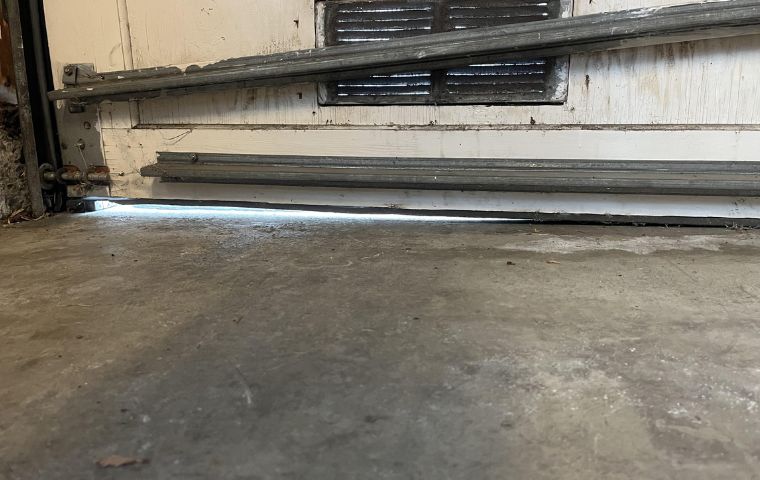
If you live in a humid area, a dehumidifier with a humidity sensor can help. Try to keep humidity levels below 60%. For models that run all the time, look for ones with hose attachments so they can drain automatically.
To help air circulate, use fans. Industrial or oscillating fans can work well. You can also improve ventilation by adding passive air vents, whirlybird turbines, or louvered attic vent panels.
If your garage isn’t insulated, think about adding insulation to the walls and ceiling. It’s a good idea to put a vapor barrier between the studs and the drywall too.
For detached garages, you can use moisture barriers like heavy-duty tarps or geotextile fabric. Applying masonry waterproofing paint on the walls can also help, and epoxy coatings are great for concrete floors. If you live in a colder area, keep the temperature above the dew point. Small heaters or seed germination mats in tool cabinets can help with this.
You might also want to look into climate control options like ductless mini-split systems or window air conditioners that can dehumidify. Cleaning regularly with diluted white vinegar can help remove mold and odors. Store your items on pallets or shelves, use breathable covers for your vehicles, and swap out cardboard boxes for plastic containers.
To protect your tools, consider using products like 3-in-1 oil, BoeShield T9, or Johnson Paste Wax. You can also use rust-inhibiting storage solutions like silica gel, calcium chloride crystals, or Zerust vapor capsules. Keep an eye on the humidity with a hygrometer, aiming for 50-55% relative humidity.
Reclaim Your Garage From Mold With Expert Solutions
Mold in your garage can quickly become a serious problem, affecting not only the structure but also your health and belongings. Left unchecked, mold growth can damage walls, ceilings, and floors, leading to costly repairs down the line.
Our mold remediation pros specialize in effective mold removal and prevention specifically tailored to garages. Our team uses advanced techniques to identify the source of moisture and eliminate mold at its root, ensuring it won’t return. Don’t wait for the problem to escalate—contact us today for a professional mold inspection and secure a healthier, safer environment for your home and family.
